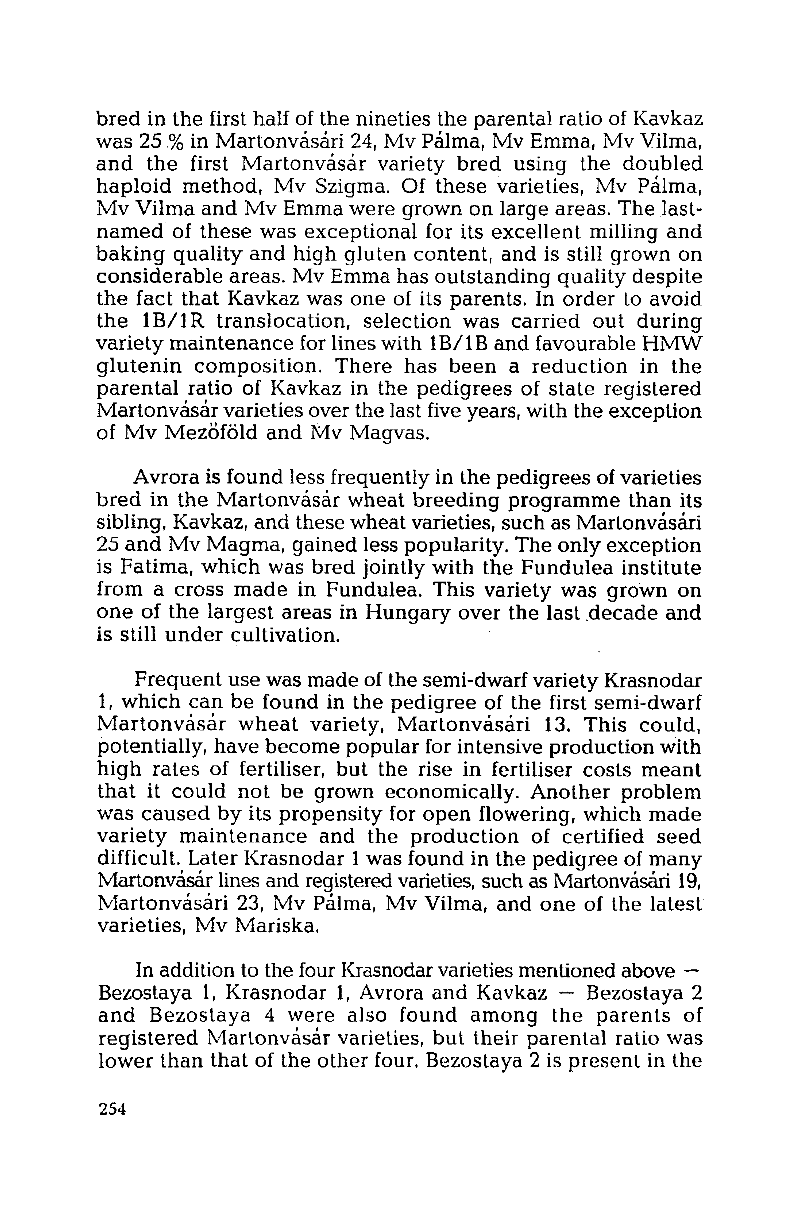

bred in the first half of the nineties the parental ratio of Kavkaz
was 25 %in Martonvasari 24, Mv Palma, Mv Emma, Mv Vilma,
and the first Martonvasar variety bred using the doubled
haploid method, Mv Szigma. Of these varieties, Mv Palma,
Mv Vilma and Mv Emma were grown on large areas. The last-
named of these was exceptional for its excellent milling and
baking quality and high gluten content, and is still grown on
considerable areas. Mv Emma has outstanding quality despite
the fact that Kavkaz was one of its parents. In order to avoid
the 1B/1R translocation, selection was carried out during
variety maintenance for lines with 1B/1B and favourable HMW
glutenin composition. There has been a reduction in the
parental ratio of Kavkaz in the pedigrees of state registered
Martonvasar varieties over the last five years, with the exception
of Mv Mezofold and Mv Magvas.
Avrora is found less frequently in the pedigrees of varieties
bred in the Martonvasar wheat breeding programme than its
sibling, Kavkaz, and these wheat varieties, such as Martonvasari
25 and Mv Magma, gained less popularity. The only exception
is Fatima, which was bred jointly with the Fundulea institute
from a cross made in Fundulea. This variety was grown on
one of the largest areas in Hungary over the last decade and
is still under cultivation.
Frequent use was made of the semi-dwarf variety Krasnodar
1
, which can be found in the pedigree of the first semi-dwarf
Martonvasar wheat variety, Martonvasari 13. This could,
potentially, have become popular for intensive production with
high rates of fertiliser, but the rise in fertiliser costs meant
that it could not be grown economically. Another problem
was caused by its propensity for open flowering, which made
variety maintenance and the production of certified seed
difficult. Later Krasnodar 1was found in the pedigree of many
Martonvasar lines and registered varieties, such as Martonvasari 19,
Martonvasari 23, Mv Palma, Mv Vilma, and one of the latest
varieties, Mv Mariska,
In addition to the four Krasnodar varieties mentioned above —
Bezostaya 1, Krasnodar 1, Avrora and Kavkaz —Bezostaya 2
and Bezostaya 4 were also found among the parents of
registered Martonvasar varieties, but their parental ratio was
lower than that of the other four. Bezostaya 2 is present in the
254
Научная электронная библиотека ЦНСХБ









